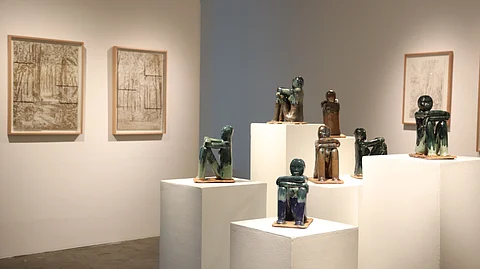THE CYCLE OF LIFE
The work of Jill Paz is a spiritual journey through art -- a multi-dimensional visual narrative that transports you to a different time and space. It is earthy, natural and symbolical, and can be reimagined into a thousand different interpretations. Her art seemingly feels like one is mapping out Morse code in an eco/Mother Earth kind of way.
The artist’s recent laser-carved cardboard paintings are inspired by art history and familiar landscapes. Inspired by symbolism and romanticism in art, especially the late works of Hidalgo, this exhibition gives one a feeling you’re in the womb of a deep forest, immersing in its warm embrace and seeking solitude void of the outside world.
The cardboard paintings came out of drawing en plein-air at an artist’s residency in the foothills of the Blue Ridge Mountains. She continued sketching, developing the drawings into watercolor paintings, and then translating that into computer files. Through a series of laser light pulses, Jill Paz carved the image onto cardboard, a material that alludes to the ubiquitous symbol of the Philippine diaspora, the Balikbayan box.
A sight to behold are Paz’s powerful sculptures inspired by the iconic anitu -- the guardians of the gates and watchers of earth. She hand-modeled each sculpture and experimented in creating the ceramic glazes from scratch, using raw materials such as silica, copper carbonate and kaolin. The glazes were layered to create unique drips, volcanic textures and bronze-like saturation. These masterpieces channel angels of the earth.
There are also watercolor paintings — pretty bouquets of echinacea, wildflowers, lilies and chrysanthemums continue Jill’s playful approach to her art.
The successful show echoes life cycles, a repetitive one at that. The artist ends with thoughts to ponder, “How do we move through the seasons, the months, the days with presence, living each day with grace and with dignity? How do we honor nature and the people we care for?


